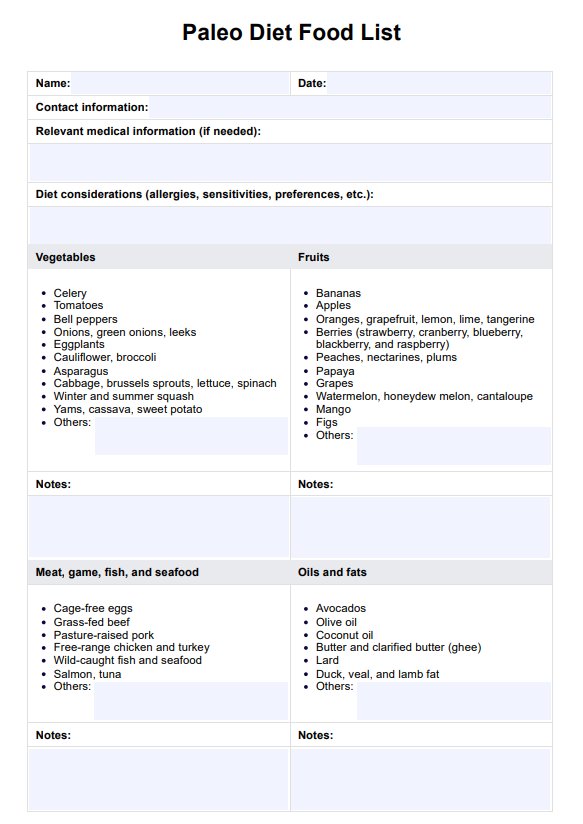The lists make following the Paleo lifestyle easier. They help people choose foods that fit their diet, simplifying grocery shopping and meal planning.

Paleo Diet Food
Help your client stick to the Paleo diet by giving them a copy of the Paleo Diet Food List template.
Use Template
Paleo Diet Food Template
Commonly asked questions
These are regularly used for planning meals and shopping. They guide the selection of foods that meet Paleo principles, emphasizing whole and unprocessed options.
Refer to the food lists as a guide for choosing foods aligned with the diet. They're crucial for meal planning, ensuring adherence to Paleo principles by avoiding grains, legumes, processed foods, and dairy.
EHR and practice management software
Get started for free
*No credit card required
Free
$0/usd
Unlimited clients
Telehealth
1GB of storage
Client portal text
Automated billing and online payments











